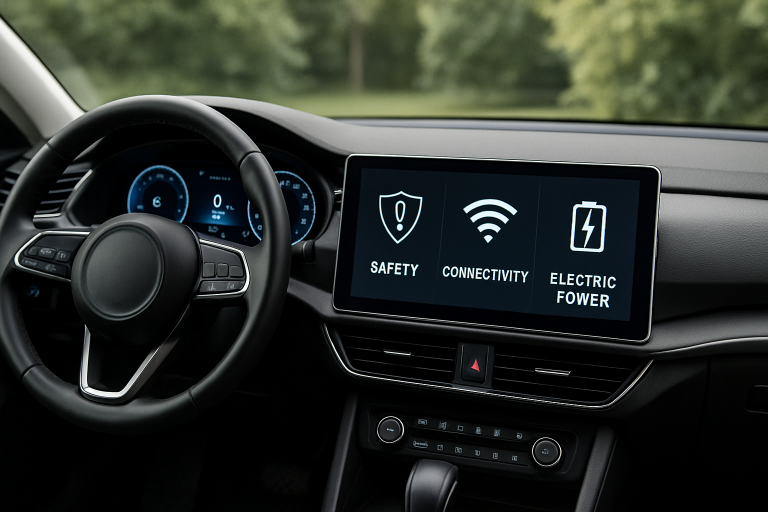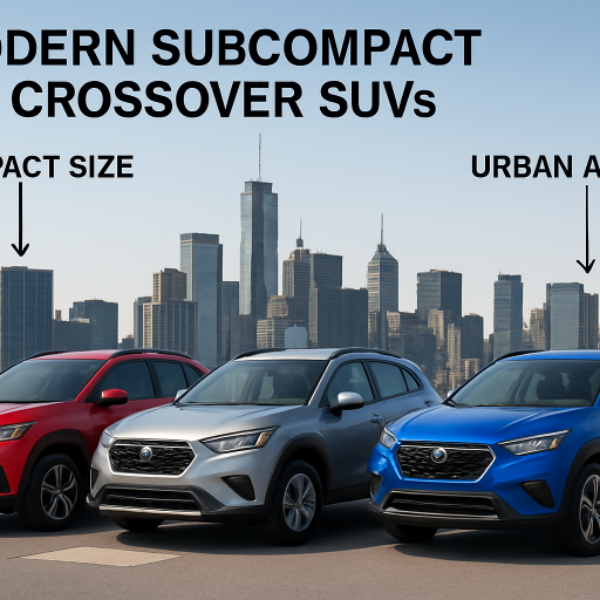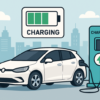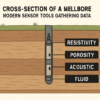How New Vehicle Technology is Shaping Everyday Driving
Introduction
The automotive industry is embarking on a remarkable transformation as innovative technologies, once limited to luxury or concept vehicles, are now standard features across new models. Today’s cars are not just about getting from point A to point B—they offer drivers a combination of unparalleled safety, seamless connectivity, and elevated efficiency that reshapes the act of driving. Advanced technologies like adaptive cruise control, biometric access, and augmented reality displays are now readily available, ensuring that every journey is safer, easier, and more enjoyable. To truly appreciate these advancements up close, visiting RAM dealerships provides a firsthand look at how the latest technologies are integrated into new vehicles. As these features become increasingly accessible, the expectations of what a modern car can deliver continue to soar, redefining convenience and setting new benchmarks for everyday driving.
Innovations such as advanced driver assistance systems, real-time vehicle-to-everything connectivity, and electric vehicle growth are leading the charge in this new era. Drivers are already reaping the benefits of systems that monitor surroundings, avoid hazards, and communicate with city infrastructure. It’s clear that new vehicle technology isn’t just a sneak peek into what’s coming—it’s actively changing how people experience the road today, making daily travel safer, more efficient, and far more connected than ever before.
Advanced Driver Assistance Systems
Advanced Driver Assistance Systems (ADAS) have transformed the modern driving experience by setting new benchmarks for safety and precision. Designed to reduce the risks posed by human error—a leading cause of road accidents—these technologies enhance driver control and awareness. Key features like adaptive cruise control, lane departure warnings with steering correction, and automatic emergency braking work seamlessly to create a safer journey. Adaptive cruise control maintains safe distances by adjusting speed, while lane-keeping assist gently realigns the vehicle if it veers off course. Automatic emergency braking can detect hazards and respond faster than most drivers. At Orlando car dealerships, many newer models now come equipped with these life-saving innovations.
At the heart of ADAS is a sophisticated configuration of sensors, radars, lidar, and high-definition cameras that continuously scan the vehicle’s environment, day and night. These sensors process real-time data on everything from surrounding traffic and pedestrian movement to road signs and hazards, empowering the driver with an extra set of “digital eyes” that never tire or get distracted. Studies and insurance data now robustly validate that cars with ADAS see noticeably fewer accidents and lower claims, bolstering consumer confidence and prompting more manufacturers to offer these features as standard.

Vehicle-to-Everything Communication
Vehicle-to-Everything (V2X) communication is a significant advancement in vehicle interaction, transforming isolated vehicles into fully networked nodes that exchange information with other vehicles, road infrastructure, and personal devices. This technology enables road users, not just vehicle drivers, to make more informed decisions and react proactively to changes and hazards. V2X can potentially reduce traffic congestion, improve urban mobility, and support innovative city initiatives. It helps maintain optimal traffic flow, relays emergency and hazard alerts faster, and reduces urban commuting times. V2X also enables semi-autonomous or fully autonomous vehicles to drive through city streets, leveraging data broadcast from infrastructure and other cars for intelligent navigational choices.
Benefits of V2X Technology
- Improved traffic flow and reduced congestion through coordinated signals and real-time routing suggestions
- Faster emergency response thanks to preemptive warnings and smart prioritization at intersections
- Urban travel times decrease by reducing bottlenecks and avoiding accidents more effectively
- Enhanced safety for vulnerable road users, such as bicyclists and pedestrians, at crossings
As V2X technology adoption accelerates, cities are evolving their infrastructures to support this new level of vehicle intelligence, making each daily commute more predictable, efficient, and safe.
Augmented Reality Head-Up Displays
Today’s focus on driver attention and road safety has brought Augmented Reality (AR) Head-Up Displays (HUDs) to the forefront of cockpit design. AR HUDs transform the windshield into an interactive information canvas, presenting vital data like navigation cues, lane guidance, speed, and warning signals exactly where drivers need them: right in their field of view. This reduces the need for glancing down to check a dashboard or mobile device, letting drivers process information more intuitively while keeping their focus on the road.
The latest AR HUDs employ advanced sensors and contextual data to overlay digital graphics—arrows, lane boundaries, and even 3D icons for hazards—directly onto real-world road scenery. The result is a user experience that is not only futuristic but practical: navigation arrows curve with the road, danger signals flash at exactly the point of a detected hazard, and speed limits update automatically. For drivers dealing with dense city traffic or navigating unfamiliar neighborhoods, AR HUDs are an invaluable tool that reduces distraction, increases reaction speed, and enhances road safety. The growing availability of AR HUDs across vehicle segments signals a deep commitment by automakers to blend technology, convenience, and proactive safety into every drive. For further insights on the advanced possibilities of AR in automotive technology, you can read more at Wheels & Motion.
Biometric Vehicle Access
With rising concerns over security and personalized convenience, biometric vehicle access is rapidly setting a new gold standard for entry and personalization. This technology does away with the need for traditional keys or cards, instead leveraging biological identifiers such as fingerprints, facial recognition, or voice patterns to unlock, start, and configure vehicles. Not only do these systems make unauthorized access incredibly difficult—practically eliminating risks tied to stolen or misplaced keys—but they also allow an unparalleled degree of vehicle customization.
Upon recognizing the authorized user, biometric systems can instantaneously adjust a vehicle’s settings, such as seat position, steering wheel height, mirror alignment, infotainment preferences, and climate controls, based on that driver’s saved profile. Many systems are also increasingly integrated with smartphone apps, enabling remote vehicle access, real-time monitoring, and sharing secure, time-limited access with friends or family members. Fleet owners, meanwhile, gain added control and accountability across multiple drivers and vehicles. This blend of tight security and intuitive personalization marks a major leap forward for modern driving, setting a new standard for both comfort and peace of mind.
Key Advantages
- Unmatched security—drivers never need to worry about lost or stolen keys compromising vehicle safety
- Instant driver-specific adjustments, making every ride more comfortable and tailored
- The ability to grant or revoke access via smartphone, adding convenience for families and employers
For individuals and organizations alike, biometric access signifies a merging of next-generation security with the everyday convenience people expect from their vehicles.
Electric Vehicle Advancements
The electric vehicle (EV) revolution is transforming how we drive, bringing about a new era of environmentally responsible and cost-efficient driving. Advancements in battery chemistry, design, and manufacturing have made EVs more efficient, allowing them to travel hundreds of miles on a single charge and recharge quickly at high-speed charging stations. Compared to current lithium-ion technologies, developing commercially viable solid-state batteries offers a brighter future with greater energy densities, lighter weights, and reduced fire risk. Charging infrastructure is rapidly expanding, with public charging stations in cities, suburbs, and along highways. Innovations like vehicle-to-grid solutions are also emerging, allowing EVs to draw energy and supply it back to the grid during peak demand. With lower emissions, reduced fuel costs, and improved driving dynamics, EVs are becoming the mainstream standard for personal and fleet transportation. Modern vehicle technologies fundamentally change how we drive and live, enhancing safety, convenience, and sustainability while building a foundation for a smarter, more connected future in personal mobility.
FOLLOW US ON FACEBOOK
RECENT POSTS
TAGS
About The Memory Hole
You've reached TheMemoryHole.org! A diverse lifestyle blog with content on a variety of different topics to help you define and live the life you want to live! Thanks for stopping by!
Copyright © The Memory Hole. All rights reserved.







